Optimal Kangaroo Paw Growing Conditions for Thriving Plants
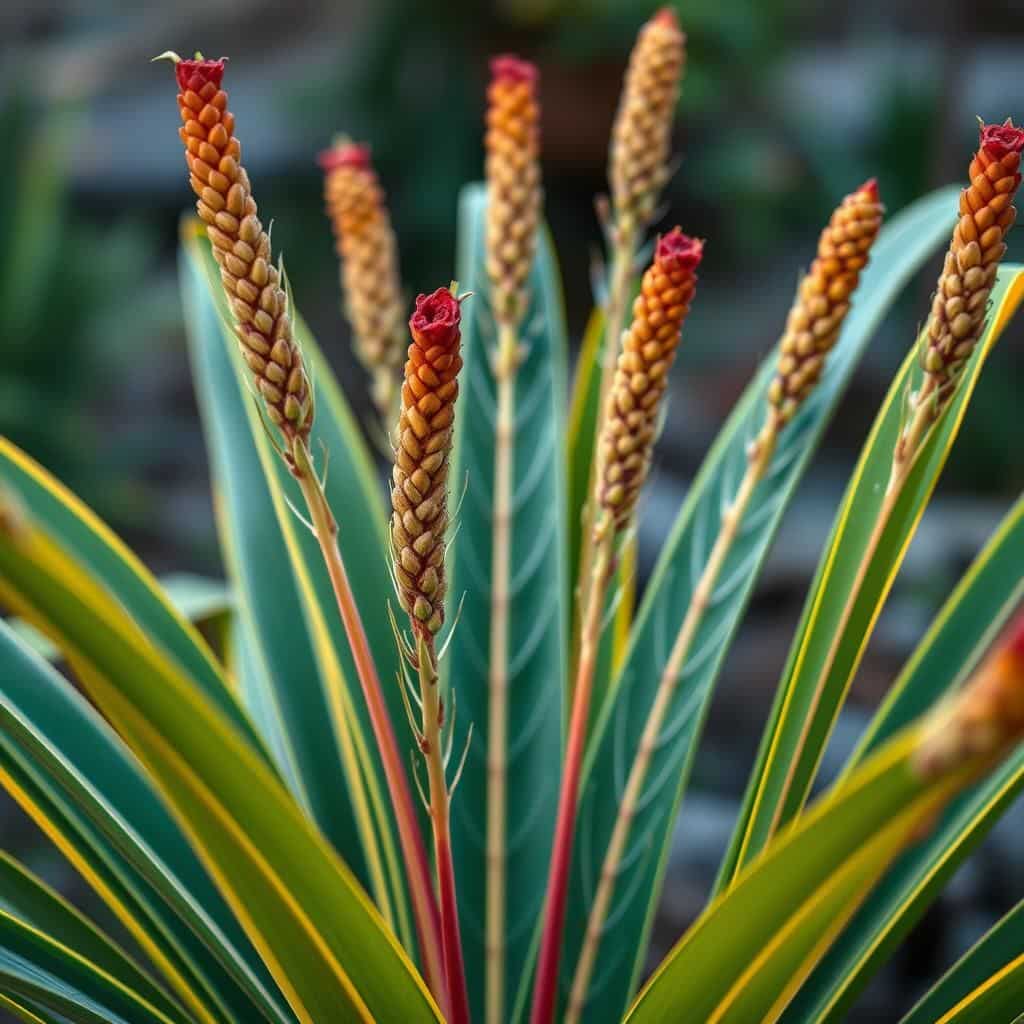
Kangaroo Paw, with its vibrant, tubular flowers and unique foliage, is a striking addition to any garden. To achieve optimal growth and abundant blooms, understanding and providing the right conditions is essential. These native Australian plants thrive in specific environments that cater to their natural preferences. Factors such as soil type, sunlight exposure, watering practices, and climate play crucial roles in their development. In this article, we will explore the ideal conditions for cultivating Kangaroo Paw, ensuring that these stunning plants flourish and enhance your outdoor space. Discover how to create the perfect habitat for these exceptional specimens.
Kangaroo Paw Growing Conditions
Kangaroo Paw thrives best in well-drained soil and enjoys full sun exposure for most of the day. These striking Australian natives prefer a warm climate, making them ideal for USDA zones 9 to 11. When planting, it's essential to choose a location that mimics their natural habitat, with limited humidity and dry conditions. Regular watering is crucial, especially during the initial growth phase, but they can tolerate periods of drought once established. Fertilizing with a low-phosphorus fertilizer can further support their growth and help them reach their full potential.
Soil Requirements
Kangaroo Paw requires well-draining soil to prevent root rot. They thrive in sandy or loamy soils, ideally with a pH of 6.0 to 7.0. It is vital to avoid overly heavy or clay-like soils, which can retain too much moisture. Amending the soil with organic matter can improve drainage and provide essential nutrients, ensuring healthy growth.
Light Conditions
For optimal growth, Kangaroo Paw needs full sunlight, typically around 6 to 8 hours a day. Insufficient light can lead to weak, leggy plants that fail to produce their stunning flowers. In hotter climates, some partial shade during the hottest part of the day can be beneficial, but generally, these plants perform best in bright, direct sunlight to facilitate robust blooming.
Watering Practices
Initially, Kangaroo Paw requires regular watering to establish a strong root system. Once the plants are settled, they are quite drought-tolerant. It is crucial to allow the soil to dry out significantly between waterings, as persistent wet conditions can lead to root diseases. Drip irrigation or watering at the base of the plant can help ensure that moisture reaches the roots without saturating the ground.
Temperature Preferences
Kangaroo Paw flourishes in warm temperatures and can withstand some heat. They prefer daytime temperatures between 65°F and 80°F (18°C to 27°C) but can endure short periods of higher heat. However, they are not frost-tolerant, so in cooler climates, it is vital to provide protection during the winter months to prevent cold damage.
Fertilization Tips
Fertilization plays a significant role in the health of Kangaroo Paw. Utilizing a low-phosphorus fertilizer is recommended because too much phosphorus can be detrimental to their growth. Applying fertilizer during the blooming season can support vibrant flowers and overall plant vigor. It’s best to follow the manufacturer’s instructions on application rates and frequency for best results.
| Aspect | Ideal Condition |
|---|---|
| Soil Type | Well-draining, sandy or loamy soil |
| Light | 6 to 8 hours of direct sunlight |
| Watering | Allow soil to dry out between waterings |
| Temperature Range | 65°F to 80°F (18°C to 27°C) |
| Fertilization | Low-phosphorus fertilizer during blooming |
Where is the best place to plant kangaroo paws?
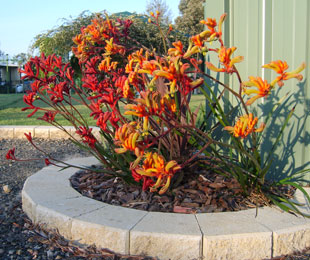
To determine the best place to plant kangaroo paws (Anigozanthos), it's essential to consider several key factors, including climate, soil type, and sunlight exposure. These native Australian plants thrive in environments that mimic their natural habitat, which is characterized by well-drained soils, full sunlight, and relatively low humidity.
Understanding Soil Requirements
Kangaroo paws flourish in well-drained soils that are slightly acidic to neutral. Here are important considerations for soil preparation:
- Drainage: Ensure that the planting area has excellent drainage to prevent root rot.
- Mixing Tools: Incorporating sand or perlite can improve soil drainage and aeration.
- Nutrient Levels: Test the soil pH; adjusting it to between 6.0 and 7.0 will be beneficial.
Choosing the Right Sunlight Exposure
Kangaroo paws require full sunlight to achieve optimal growth and flowering. When considering the best place for planting, take into account the following:
- Direct Sunlight: Ideally, they should receive at least 6-8 hours of direct sunlight daily.
- Propagation Areas: Areas with partial shade can lead to leggy growth and reduced blooming.
- Summer Consideration: In hotter regions, a little afternoon shade can help prevent scorching.
Climate Considerations
Understanding the climate in your area is crucial for successful growth. Kangaroo paws are well-suited for specific climatic conditions:
- Warm Temperatures: They thrive in warmer climates but should be protected from frost.
- Humidity Levels: Low to moderate humidity is ideal; high humidity may lead to fungal issues.
- Seasonal Growth: They usually bloom in late spring to early summer, so timing of planting is key.
Spacing for Growth
Proper spacing is essential for the healthy development of kangaroo paws. Consider the following factors when planting:
See also: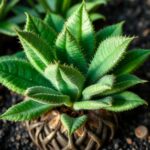
- Plant Size: Ensure enough space between plants for airflow and sunlight.
- Recommended Distance: A spacing of about 18-24 inches between each plant is ideal.
- Grouping Varieties: Group similar varieties together for a cohesive look and easier care.
Maintenance and Care Tips
Once planted, ongoing care is necessary to keep kangaroo paws healthy. Here are some tips for their maintenance:
- Watering: Water them deeply but infrequently to encourage deep root growth.
- Fertilization: Use a low-phosphorus fertilizer to meet nutrient needs without damage.
- Pruning: Cut back spent flowers to promote new growth and maintain aesthetics.
How much sun does a kangaroo paw need?
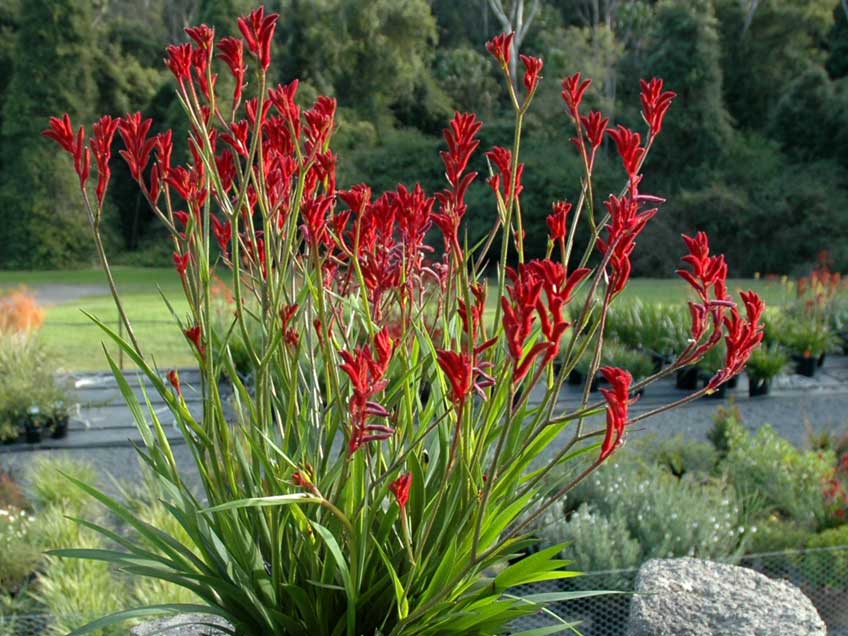
Kangaroo paw, scientifically known as Anigozanthos, is a unique plant native to Australia. It thrives best in specific environmental conditions, particularly when it comes to sunlight exposure. Here’s a detailed look at how much sun a kangaroo paw needs.
Optimal Sunlight Conditions
Kangaroo paws require full sun to flourish. They should ideally be placed in a location that receives at least 6 to 8 hours of direct sunlight each day. While they are resilient, their flowering and overall health can significantly diminish under low-light conditions.
- The intensity of sunlight helps in the development of vibrant flowers.
- Plants in insufficient light may become leggy and fail to bloom.
- Sunlight exposure also aids in overall plant vigor and disease resistance.
Effects of Insufficient Sunlight
When kangaroo paws do not receive enough sunlight, several negative effects may manifest. This lack of proper exposure can lead to stunted growth and reduced flowering potential.
- Decreased flower production—less sunlight results in fewer blooms.
- Weak stems—plants may become elongated and flimsy.
- Greater susceptibility to diseases due to weakened health.
Sun Exposure During Different Seasons
Kangaroo paws may adjust their sunlight needs slightly depending on the season. In the heat of summer, they can handle full sun, but in extreme heat, some afternoon shade may be beneficial.
- In spring, they thrive with full exposure without issue.
- During summer, monitor for heat stress and provide light shade if needed in the afternoon.
- In winter, ensure they still receive sunlight, although their growth may slow down.
Indoor vs. Outdoor Growth
For those who wish to grow kangaroo paws indoors, the sunlight requirements remain crucial. When cultivated indoors, consideration must be given to placing the plant near a window that gets ample direct sunlight.
- Choose a south-facing window to maximize sunlight exposure.
- Rotate the plant periodically to ensure even growth and light distribution.
- Supplement with grow lights if natural light is insufficient.
Conclusion on Care and Maintenance
In terms of care, understanding the sunlight needs of kangaroo paws is essential for their success. Proper sunlight helps maintain their health and vibrancy.
- Regularly observe your plant for signs of stress or inadequate light.
- Fertilize appropriately to support health under full sunlight conditions.
- Prune spent flowers to encourage new growth and improve flowering capacity.
Are kangaroo paws resilient?
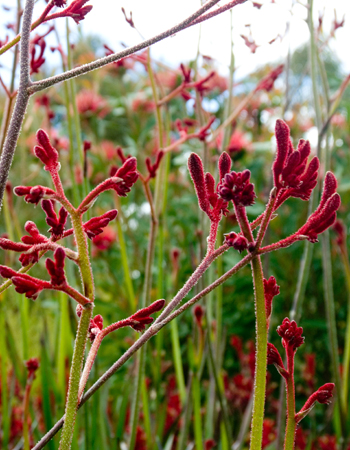
Kangaroo paws, belonging to the genus Anigozanthos, are indeed considered resilient plants, particularly well adapted to their native environment in Australia. Their resilience stems from various physiological and ecological characteristics.
Adaptability to Soil Conditions
Kangaroo paws exhibit a high level of adaptability to different soil types, which is essential for their survival in diverse habitats. They prefer well-drained soils and can thrive in both sandy and clay soils. Here’s how they adapt:
- Soil pH Tolerance: They can grow in a range of soil pH levels, which allows them to inhabit various regions.
- Root System: Their deep root systems enable them to access nutrients and water efficiently.
- Decomposing Material: They benefit from organic material in the soil, improving nutrient availability.
Resistance to Pests and Diseases
Kangaroo paws are relatively resistant to many pests and diseases that affect other ornamental plants. This resilience is attributed to their unique structural features:
- Fuzzy Texture: The fuzzy leaves can deter some pests from feeding on them.
- Natural Oils: They produce oils that can act as repellents against certain insects.
- Genetic Variation: Different species exhibit varying resistance levels, promoting overall survival in adverse conditions.
Water Efficiency
Kangaroo paws are also noted for their water efficiency, allowing them to thrive in environments with limited water availability. Their drought tolerance is an important aspect of their resilience:
See also:
- Summer Dormancy: They can enter a dormant phase during dry spells, conserving resources.
- Leaf Structure: Their narrow leaves minimize water loss through transpiration.
- Water Storage: The plants are capable of storing water in their root systems for use during dry periods.
Climate Adaptability
These plants are well-suited to various climatic conditions, making them versatile for gardeners in different regions. Their adaptability is evident through:
- Temperature Tolerance: They can withstand both high temperatures and occasional frosts.
- Environmental Flexibility: Kangaroo paws can thrive in coastal areas, dry inland regions, and everything in between.
- Wind Resistance: Their sturdy structure helps them endure strong winds without significant damage.
Ecological Role and Benefits
Kangaroo paws play an important role in their ecosystems, contributing to biodiversity and providing benefits to local wildlife. Their ecological resilience can be demonstrated as follows:
- Attracting Pollinators: They attract various pollinators, including bees and birds, thus supporting the ecosystem.
- Soil Stability: Their presence helps in soil stabilization, preventing erosion.
- Companion Planting: Kangaroo paws can benefit surrounding plants by improving soil health and structure.
Do kangaroo paws come back every year?
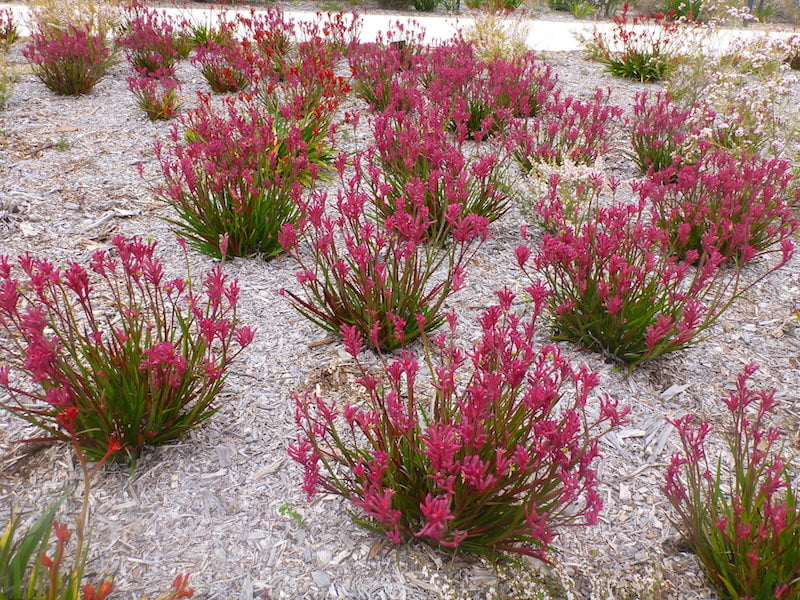
Kangaroo paws, known scientifically as Anigozanthos, are perennial plants that are native to Australia. Whether they come back every year largely depends on the specific species and the growing conditions to which they are subjected. Generally, they are hardy and resilient, enabling them to thrive in diverse environments. The plants typically go dormant after flowering but can regrow in the following seasons, provided they are cared for adequately. Factors such as climate, soil quality, and irrigation practices play significant roles in their yearly return.
Growing Conditions for Kangaroo Paws
The success of kangaroo paws returning each year is heavily influenced by their growing conditions. Ideally, they thrive in well-drained soil that mimics their native Australian habitats. Important conditions include:
- Soil Type: Sandy or loamy soil is preferred for optimal drainage.
- Sunlight: Full sun exposure is crucial for healthy growth and robust flowering.
- Watering: Moderate watering; they prefer not to sit in waterlogged conditions.
Perennial Nature of Kangaroo Paws
As perennials, kangaroo paws can return year after year. Their lifecycle typically involves a dormant phase, especially after flowering in the summer months. During this phase, they may appear lifeless but will often return to full health with appropriate care:
- Flowering Season: They typically flower in spring to summer, after which growth slows down.
- Dormancy: After flowering, plants may die back but often return in the next growing season.
- Resilience: They have adapted to survive dormancy, allowing them to regenerate yearly.
Pruning and Maintenance
Proper pruning and maintenance practices can significantly impact the likelihood of kangaroo paws returning each year. Deadheading spent flowers and pruning old foliage encourages new growth:
- Deadheading: Removing spent flowers can promote further blooming.
- Trimming: Cutting back dead or dying leaves prepares the plant for new growth in the next season.
- Fertilization: Applying a balanced fertilizer can boost health and flowering potential.
Pest and Disease Resistance
Kangaroo paws are generally resistant to many pests and diseases, which contributes to their ability to return each year. However, they can still face some challenges:
- Root Rot: This often occurs in poorly draining soils; avoiding waterlogged conditions is essential.
- Pests: Aphids and spider mites can occasionally be an issue; regular monitoring is recommended.
- Fungal Issues: Keeping foliage dry can help prevent fungal diseases.
Climate Adaptability
Kangaroo paws are adaptable to various climates, but their resurgence each year is closely linked to climate conditions. They flourish best in specific environments:
- Temperature: They prefer warm temperatures; extreme cold can negatively affect their survival.
- Rainfall: Experience a dry period in winter helps promote flowering in spring.
- Humidity: They thrive in lower humidity levels, making them suitable for dry climates.
Questions from Our Readers
What are the ideal soil conditions for kangaroo paw?
Kangaroo paw thrives in well-draining soil that is rich in organic matter. It's best to use a sandy or loamy soil mix with a pH between 6.0 and 7.0. Ensure the soil is not waterlogged, as this can lead to root rot.
How much sunlight do kangaroo paws need?
Kangaroo paws require full sun to grow optimally, needing at least 6 to 8 hours of direct sunlight each day. However, they can tolerate partial shade, especially during the hottest parts of the day, to prevent leaf scorch.
What are the watering requirements for kangaroo paw?
Kangaroo paw plants prefer to be watered deeply but infrequently, allowing the soil to dry out between waterings. Overwatering can be detrimental, so it's essential to ensure adequate drainage and avoid standing water around the roots.
What temperature range is suitable for growing kangaroo paw?
Kangaroo paws grow best in a temperate climate, ideally between 60°F and 75°F (15°C to 24°C). They can withstand some heat, but prolonged exposure to temperatures above 95°F (35°C) may stress the plant and affect its growth.
See also:

If you want to read more articles like Optimal Kangaroo Paw Growing Conditions for Thriving Plants, we recommend you check out our Landscaping category.
Leave a Reply
Related Articles